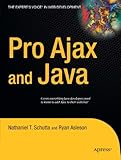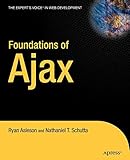Nathaniel Schutta
Architect as a Service
Nathaniel T. Schutta is a software architect and Java Champion focused on cloud computing, developer happiness and building usable applications. A proponent of polyglot programming, Nate has written multiple books, appeared in countless videos and many podcasts. He’s also a seasoned speaker who regularly presents at worldwide conferences, No Fluff Just Stuff symposia, meetups, universities, and user groups. In addition to his day job, Nate is an adjunct professor at the University of Minnesota, where he teaches students to embrace (and evaluate) technical change. Driven to rid the world of bad presentations, he coauthored the book Presentation Patterns with Neal Ford and Matthew McCullough, and he also published Thinking Architecturally and Responsible Microservices available from O’Reilly. His latest book, Fundamentals of Software Engineering, is currently available in early release.
Presentations

Development teams often focus on getting code to production losing site of what comes after the design and build phase. But we must consider the full life cycle of our systems from inception to deployment through to sunset, a discipline many companies refer to as site reliability engineering.
While your organization may or may not have an SRE team, you have someone playing that role and we can all benefit from looking at the principles and practices that we can bring to bear on our projects. In this talk, I will introduce the concepts of SRE and how you can adopt these ideas on your applications.

Every organization has at least a phalanx or two in the “Cloud” and it is, understandably changing the way we architect our systems. But your application portfolio is full of “heritage” systems that hail from the time before everything was as a service. Not all of those applications will make it to the valley beyond, how do you grapple with your legacy portfolio? This talk will explore the strategies, tools and techniques you can apply as you evolve towards a cloud native future.
In this talk, you will learn:
- how to evaluate your legacy applications
- how to take those heritage systems to the Cloud
- what 12 Factors means for you
- where it makes sense to use microservices
- what tools and services you'll need to add to your repertoire

If you’ve spent any amount of time in the software field, you’ve undoubtably found yourself in a (potentially heated) discussion about the merits of one technology, language or framework versus another. And while you may have enjoyed the technical debate, as software professionals, we owe it to our customers (as well as our future selves) to make good decisions when it comes to picking one technology over another.
In this talk, I will explore what criteria we should consider when comparing technologies, how we can avoid burning platforms as well as what to do when we’ve reached a dead end. We will also apply these techniques to a current technology or two.
Books
Presentation Patterns: Techniques for Crafting Better Presentations
by Neal Ford, Matthew McCullough, and Nathaniel Schutta
-
Presentation Patterns is the first book on presentations that categorizes and organizes the building blocks (or patterns) that you’ll need to communicate effectively using presentation tools like Keynote and PowerPoint.
Patterns are like the lower-level steps found inside recipes; they are the techniques you must master to be considered a master chef or master presenter. You can use the patterns in this book to construct your own recipes for different contexts, such as business meetings, technical demonstrations, scientific expositions, and keynotes, just to name a few.
Although there are no such things as antirecipes, this book shows you lots of antipatterns—things you should avoid doing in presentations. Modern presentation tools often encourage ineffective presentation techniques, but this book shows you how to avoid them.
Each pattern is introduced with a memorable name, a definition, and a brief explanation of motivation. Readers learn where the pattern applies, the consequences of applying it, and how to apply it. The authors also identify critical antipatterns: clichés, fallacies, and design mistakes that cause presentations to disappoint. These problems are easy to avoid—once you know how.
Presentation Patterns will help you
- Plan what you’ll say, who you’ll say it to, how long you’ll talk, and where you’ll present
- Perfectly calibrate your presentation to your audience
- Use the storyteller’s “narrative arc” to full advantage
- Strengthen your credibility—and avoid mistakes that hurt it
- Hone your message before you ever touch presentation software
- Incorporate visuals that support your message instead of hindering it
- Create highly effective “infodecks” that work when you’re not able to deliver a talk in person
- Construct slides that really communicate and avoid “Ant Fonts,” “Floodmarks,” “Alienating Artifacts,” and other errors
- Master 13 powerful techniques for delivering your presentation with power, authority, and clarity
Whether you use this book as a handy reference or read it from start to finish, it will be a revelation: an entirely new language for systematically planning, creating, and delivering more powerful presentations. You’ll quickly find it indispensable—no matter what you’re presenting, who your audiences are, or what message you’re driving home.
-
Pro Ajax and Java Frameworks
by Nathaniel Schutta and Ryan Asleson
-
Ajax (Asynchronous JavaScript and XML) is the ultimate web programming methodology for producing dynamic, rich web experiences. Java developers are crying out for guides showing how to add Ajax functionality to web applications, and this book meets their needs with Pro Ajax and Java. This is the book every Java developer needs to become expert in Ajax. The authors provide the reader with the perfect Java/Ajax toolkit to get started quickly, exploring Ajax development in detail using the 4 most popular Java web application frameworks: Struts, Spring, JSF, and Tapestry.
Foundations of Ajax
by Nathaniel Schutta and Ryan Asleson
-
* Ajax is one of the hottest topics in the developer community right now! and this will be the first Ajax book that offers detailed explanation of how Ajax works and how to use it to best effect. Theory and practice covered immediately in one volume.
* Ajax works across many platforms and different groups of developers – this book is designed to be suitable for all those developers across all those platforms, who are interested in the hot new topic of Ajax.
* Demand for Ajax knowledge will be strong. Leading technology companies like Google, Yahoo, Adaptive Path, and Amazon are adopting Ajax techniques, and many other companies are doing the same in order to compete with Ajax. This book connect the developer community to the new Ajax functionality.
-
You know about Extreme Programming, Agile cooperation, and continuous improvement, but did you know you can apply these to UI design? I'll show you how to make your end users happy all the time by applying what you already know about software development to the design and implementation of user interfaces. More and more, developers are being called upon to create user interfaces without designers. Extreme UI Design: The User is Always Right will show you how to use your well-honed programming skills to build measurably effective front ends.
It's all about usability, the software equivalent of flossing; you know you should do it, yet sometimes there just isn't time. For developers, there often isn't money to hire a designer. In tough times, developers who can design become essential, but most software engineers are schooled in algorithms and compilers and rarely in the intricacies of user interaction. This book is for all of you who find yourselves working on the front lines of software development and want to create an application that respects the maxim that all users are right.
- Discover best UI design practices for software engineers.
- Maximize usability right in your code with a few simple tools.
- Write software that works for the user!
What you'll learn
- Distinguish usability myth from reality
- Give users both what they want and what they need (these aren't the same)
- Use your application prototypes as test beds for usability
- Apply rigorous heuristics to measuring UI effectiveness
- See why CRAP is important to creating good interfaces
- Identify and avoid common UI anti-patterns
Who is this book for?
Looking to get an edge in today's workplace? Worried about being downsized? As companies look to cut expenses, the developer who can do more has a better chance of survival. If the UI team gets the axe, can you step in and help run a usability test or whack out a paper-based prototype? After reading this book, you'll be more valuable to your software development organization, you'll have a more complete toolbox, and you'll create applications that don't make your users yack .
This book is primarily aimed at software developers who are tasked with front-end development. Considering that almost all software has some kind of interface, it should appeal to a large audience. Depending on how the book is slanted, it should also interest the agile community.




